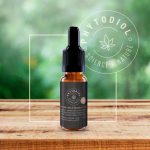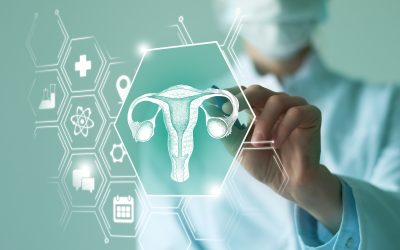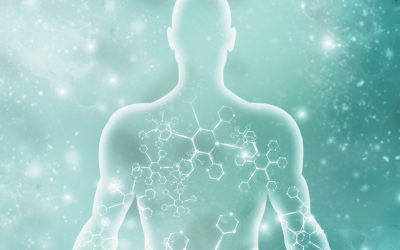
You’ve probably heard of the nervous system: it controls our body through voluntary or involuntary actions. The same goes for the immune system: you know it helps us fight infections. What about the endocannabinoid system ? You will no doubt have a hard time knowing what it is, like most people, and with good reason. Its “discovery” is relatively new. Scientists looked at it about 30 years ago. And there is nothing anecdotal. Because over time, it has been observed that this system is of capital importance in the functioning of our body.
What is the endocannabinoid system?
The endocannabinoid system has never really received much attention from the scientific community. Research and studies began only about thirty years ago, and some of them are being hushed up by the pharmaceutical industry. Yet all studies point to similar conclusions. The endocannabinoid system is essential for keeping us healthy. Named after the plant which contributed to its discovery at the end of the Eighties, it takes part in the regulation of the body’s balance. It is involved in communication between cells, metabolism, sleep, appetite, digestion, hunger, mood, motor control, but also in immune functions, reproduction, fertility, pleasure, reward, pain or thermal regulation. In a nutshell, the endocannabinoid system regulates the overall functioning of our body. How does it work, though ?
We all have cannabinoid receptors. They are located in our brain and all over our body: lungs, liver, intestines, uterus, testes and many other organs. These receptors become activated when you consume THC, which is the active substance in cannabis. However THC is not the only substance found in this plant. The different varieties of plants in the cannabis family can contain up to 100 cannabinoid substances.
What most people don’t know is that receptors in the endocannabinoid system also activate without ingesting this substance. The body can do this on its own. It naturally produces molecules that bind to our cannabinoid receptors and cause the plant effects, mimicking its action, without its consumption.
To imitate this action, imagine keys and locks. Receptors are locks. To open them, you need keys, called ligands in biochemistry. They can trigger a biological action by communicating with the receptors. This mechanism represents the endocannabinoid system. The specificity of this system lies in the fact that, our body alone produces, according to its needs, these molecules with actions similar to those of cannabis. The prefix “endo” implies this “self-production” and means internal. It’s worth noting that breast milk contains cannabinoid substances.
How does the endocannabinoid system do?
The endocannabinoid system is made of 3 key elements:
- Enzymes creating or destroying cannabinoids
- Cell receptors receiving cannabinoids
- Endocannabinoid molecules naturally produced by the body
There are two types of receptors :
– Receptor CB1 : It is found in the central and peripheral nervous system, as well as in nerve cells and glial cells which are involved in the learning process and memory.
– Receptor CB2 : Many are found in cells of the immune system. They are also found in the digestive system, liver, and fat cells.
What is the role of the endocannabinoid system?
The endocannabinoid system is believed to be the source of homeostasis. This term refers to the process which regulates the equilibrium and the normal functioning of the body. Simply put, it keeps us healthy. This mechanism plays a role in hunger, weight management, body temperature, digestion, pain, energy, sleep, appetite, motor functions, reproductive functions, pleasure, inflammation regulation…
In a way, endocannabinoids are responsible for good harmony between body and mind. A key function of this system is therefore to react to stress signals in order to maintain balance. If it doesn’t work well, because the balance is lost, disease can develop. According to recent research, a poor lifestyle, or an unbalanced diet can alter this harmony.
Read our article on Strengthen and balance naturally your endocannabinoid system
The endocannabinoid system and obesity
This system plays an important role in excess weight. In this particular situation, according to scientific studies, the two receptors CB1 and CB2 would not be homogeneously stimulated. The CB1 receptor would be excessively so. It would increase food intake, through its action regarding the central and autonomic nervous system. It would also have effects on the olfactory, visual and taste senses which would stimulate the attraction to high-energy fatty food. Other effects of this excessive stimulation: a decrease in energy consumption and the use of lipids as fuel by peripheral tissues. The overactive CB1 receptor seems to increase energy storage by increasing fat storage, insulin and glucose levels. Not to mention a much easier uptake of lipids by adipose tissue cells. As for the CB2 receiver, it would be a bit lazy. Thus insufficiently stimulated, it would lead to easier storage of fat, and therefore to weight gain.
The solution to rebalance everything is through a decrease in stimulation of CB1 receptors, and stimulation of CB2 receptors. This is exactly what you get from taking CBD, with the effect of regulating your appetite. But that’s not all. It can reduce anxiety, which causes compulsive eating to relieve stress, not hunger. Finally, the last major asset of CBD is the stored fat release stimulation. This amplifies the benefits of lower insulin production, achieved from a more favorable diet. In summary, CBD could have a very interesting effect on weight loss.
Until today, research and scientific studies continue, because this system has probably not revealed all its secrets. The discovery is recent, but the associated health benefit is becoming clearer.
Scientific research and studies continue to this day, as this system has probably not revealed all its secrets. The discovery is recent, but its interest for our health is becoming clearer.
- CBD oil is generally well tolerated and safe at high doses.
- It is advisable to take it before the main meals.
Discover the best books and food supplements selected for you, in our nutrition and natural health shop.




